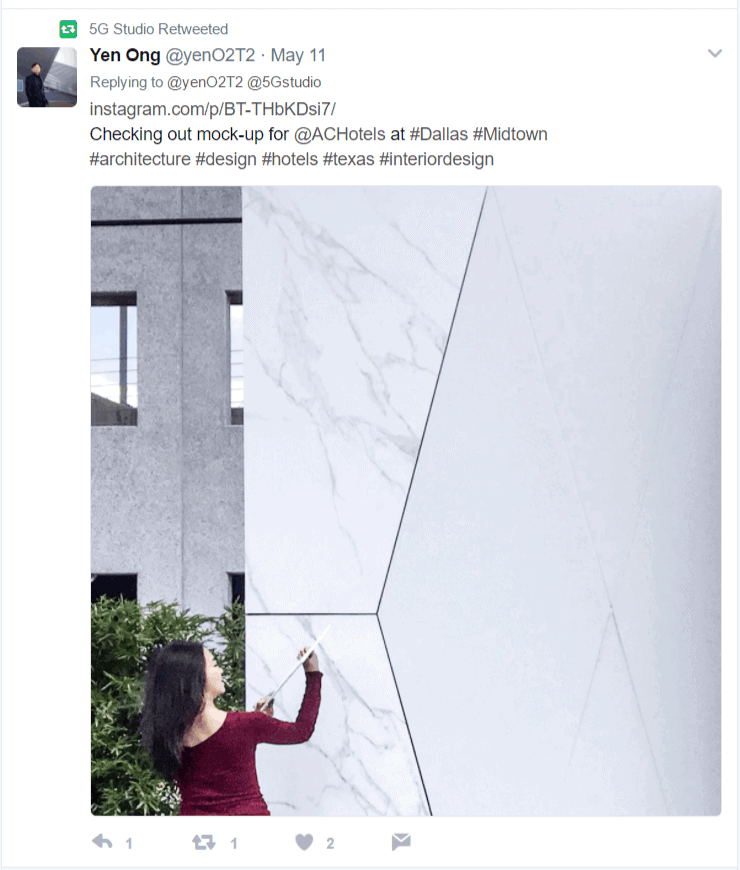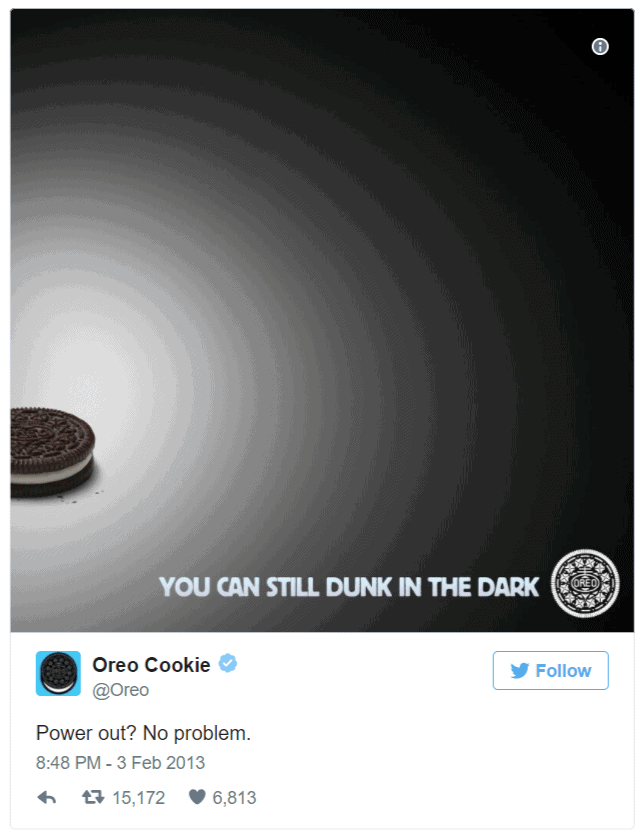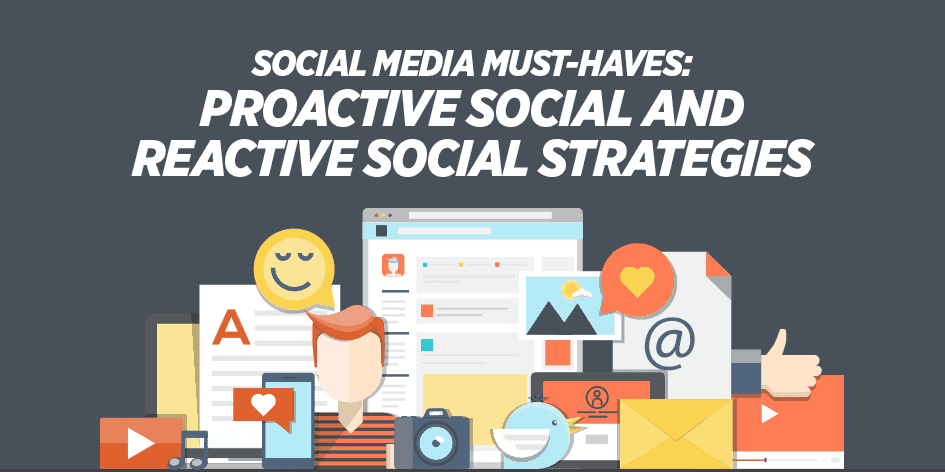If you’re just starting out with your social media marketing, you’re probably spending a lot of time planning out your social media calendar, posting images of your products, and finding other influencers in your industry to follow and chat with.
Although you may not have stopped to consider it – you’re just trying to build a social media presence, after all – this is called proactive social community management.
As you might have guessed, there’s an inverse of this strategy, too: reactive social community management. And while the balance between them will differ for every brand, you do need to incorporate both tactics as you put together your social strategy.
What is a proactive social media strategy?
Proactive social media strategy involves a lot of the elements of social media that you probably think of when you think of “social media strategy.”
The daily, weekly, or monthly posts that you put up just to let your followers know what’s going on with your brand – those are proactive.

In this tweet, for example, Yen Ong of the Dallas-based 5G Studios architecture firm is sharing a snapshot of a new project the firm is working on. Ong and 5G are letting followers in on what’s new at 5G, offering them an unfiltered glimpse of the process.
Of course, that’s one of the greatest advantages, and most revolutionary effects, of social media – brands are able to talk directly to their followers and customers, without having to hide behind formal communications channels.
There’s more to proactive social, however. Think of proactive customer service. Social media has long been established as a powerful customer service tool, and countless brands have put it to work when it comes to communicating with their customers.
The eyeglasses brand Warby Parker is a superstar in regards to providing personalized, 21st-century customer service. Among other things, the brand often posts short “thank-you” videos to people who say nice things about them on social media:
Another use of proactive social? Sharing your content. Blog posts, webinars, infographics, curated lists, and links – these are all important parts of proactive social.
Advantages of proactive social strategy
Proactive social has a lot of advantages.
For one thing, you can plan it out.
It’s not a response to anything, so you can schedule posts days and weeks in advance. You can develop campaigns around proactive social. You can schedule a photography session of your brand-new beautiful workspace, and use those photos in posts for weeks.
If an event like a company anniversary, founder’s birthday, or a relevant holiday is coming up, you’re able to develop great posts that can piggyback on that event.
Drawbacks of proactive social strategy
It may seem like there really aren’t any drawbacks to proactive social since it gives you time to showcase your brand’s best side.
However, there is one major drawback to focusing solely on a proactive strategy: it makes you seem out of touch with the rest of the world.
No one wants to hear someone talk about themselves all the time, right? Well, it’s just as true in the social media world as it is in real life. If all you’re posting is proactive social content, you’re missing a lot of opportunities.
You’re not responding to customers, whether they’re singing your praises or airing grievances.
You’re not commenting on trends or events happening in the greater world.
You’re not taking risks.
And that is why you need another side to your social: reactive social media strategy.
What is a reactive social strategy?
Reactive social is the flip side of the coin as far as social strategy goes.
It means, of course, that you’re reacting to things. That could be a comment by a fan or a breaking news story that’s relevant to your industry.
Reactive social is often fast and agile – it’s a perfect opportunity to show that your brand is quick on its feet. This isn’t always the case, of course, but reactive social is often where some of the most memorable posts come from (like the Oreo Superbowl tweet, for example).

There are a few uses for reactive social.
The first is simply building connections with other users. Giving a shout-out to an influencer who blogs about your brand, and then later sharing another excellent piece of his or her content – even if it has nothing to do with your brand – is reactive (although, admittedly, you could make the argument that this is a proactive strategy as well).
Conversing with your fans about topics that are important to them – that’s reactive.
These are fairly simple things to do, and most brands do them well. Where it gets more complicated is with newsjacking or what some call “culture jacking.”
Newsjacking involves jumping on a current event or breaking piece of news in order to capture tons of social media traffic and – hopefully – gain new followers.
The problem is that it takes finesse to do so tastefully. There are far too many stories of brands that attempted to use a major event in order to pull in more followers, and only succeeded in offending people.
While this fact ought to be obvious, it bears repeating: newsjacking stories of human suffering is never ethical, and never a good idea. Natural disasters, revolutions, terrorist attacks – the best thing your brand can do when these tragedies strike is either to stay silent or express sincere sorrow.
So what kinds of events are appropriate to take on? It depends on your brand, of course, but in general, things like the Superbowl, Fashion Week, the Oscars, and other pop culture events can all be good opportunities to jump into a trending conversation.
Politics is usually a bad idea, unless your following leans decisively one way or another. If that’s the case, there are times when commenting on politics can help your brand.
The bottom line with newsjacking or culture jacking: be sensitive, be smart, and don’t tweet anything without truly thinking it through.
How do proactive and reactive social strategies work together?
You need both a proactive and reactive strategy because neither one all by itself will allow you to accomplish your goals.
Let’s say you want to gain some new customers. That involves a lot of proactive social – posting new content, searching out relevant influencers, making sure your feed is active and interesting on a weekly, if not daily, basis.
But how about when those new potential customers reach out to you with a question or comment? You’ve got to be able to react quickly and thoughtfully. Maybe that means posting a quick video like Warby Parker, or simply saying “thank you!” and giving that new customer a shout-out on Instagram.
On the flip side, what if you’re trying to increase loyalty among your current followers? They certainly don’t want to be talked at over and over and over – they want interaction. They want you to notice them, talk to them, give them opportunities to share their own thoughts and wants and needs. They need reactive strategies to make them feel like they’re valued.
At the same time, if you don’t give your current fans something to keep them interested – namely new content – they’ll eventually drift away. That’s where your proactive strategy comes in.
Navigating the social media waters can be a delicate task. Need some help? Read our post “Social Media Management Hacks That Will Save You Hours Each Week.”





